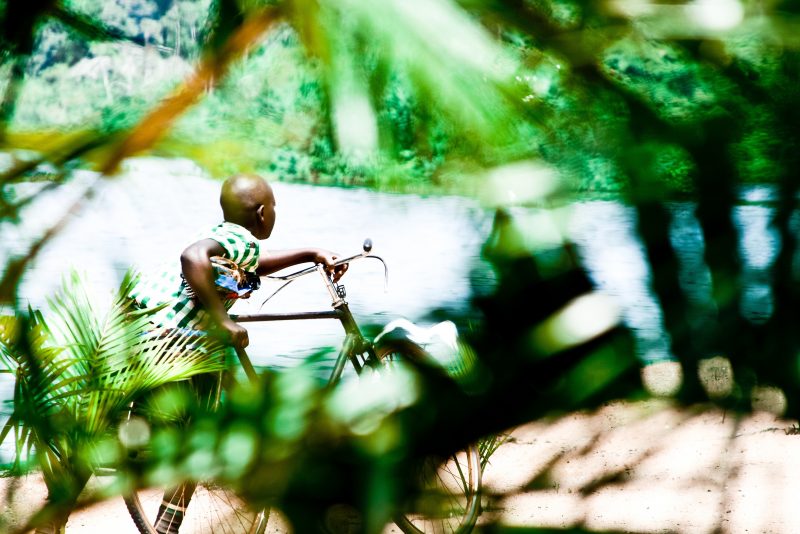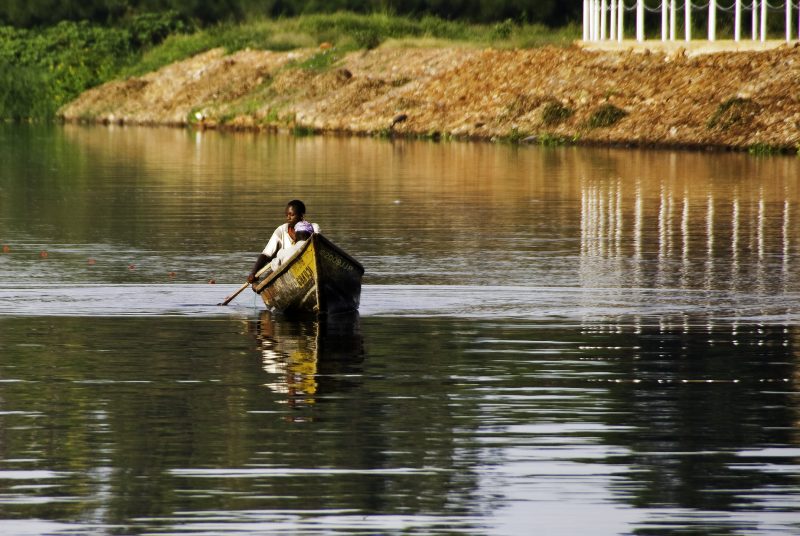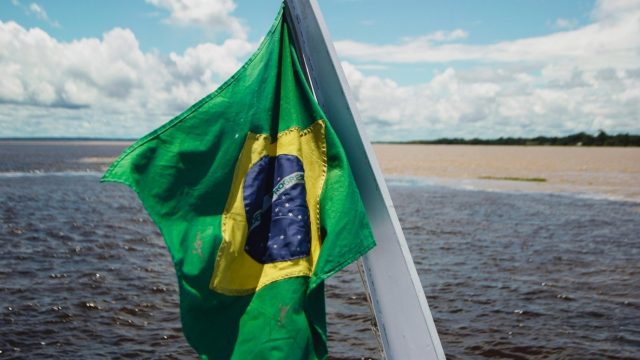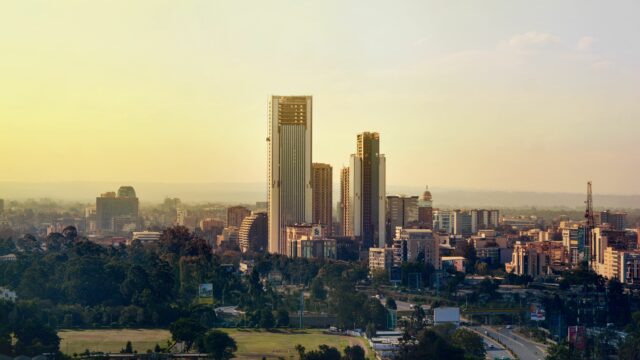Playing hide and seek in Uganda's wetlands
Uganda's rivers and wetlands are in need of urgent restoration. But is enough being done to accommodate local farmers?

Uganda's rivers and wetlands are under mounting pressure from unsustainable agriculture, pollution and climate change. Here, Julian Barungi of our Ugandan partners ACODE recounts her personal experiences of visiting a recently-restored wetland - where all is not necessarily as it seems...
This year, the River Rwizi has had its share of media attention in Uganda, with frequent reports on water shortages, floods, pollution, wetland destruction and the eviction of encroachers from wetlands.
This endless stream of negative stories was quite disheartening, which was perhaps why I was excited to hear some positive news for a change at a recent workshop. Leaders from ten District Local Governments within the River Rwizi catchment spoke proudly about the Nyakambu wetland, a previously degraded area which they had now restored. The dialogue was organised by the Advocates Coalition for Development and Environment (ACODE), with support from the European Union and the Green Economy Coalition.
The Nyakambu wetland had been degraded by crop and livestock farmers, who cut down the vital papyrus reeds, causing a marked deterioration in the quality and quantity of the water. However, in 2014, the Mbarara District Local Government and other partners began restoring the wetland through awareness campaigns on wetland protection, community policing and establishment of the Rwizi community environmental conservation fund, a revolving fund that allows farmers to buy supplies in order to engage in other income generating activities outside of the newly restored wetlands.
Curious to see this restored wetland for ourselves, my two colleagues and I set off on a Thursday afternoon to have a personal feel of what a restored wetland looks like.
“ If I am seen with you, won’t my fellow community members think of me as a traitor?”
After a stretch of a dusty bumpy road, we reached a Nyakambu trading centre in Mbarara District, where we asked one gentleman to direct us to the wetland. To my disappointment, he said that he didn’t know the place but signalled another man, who was already relaxing at a local shop, to guide us. However, he seemed less than keen: “Hoonashi kubarandeebe ndinaimwe tibarantwaremu kuubi?” (“If I am seen with you, won’t my fellow community members think of me as a traitor?”) After some convincing and reassurance, our new guide, who didn’t reveal his name, agreed to come along and guide us for the evening.
A few kilometres from the trading centre, on a small winding road, the vehicle began to skid due to the wet clay. Since dark clouds were forming in the sky, we decided to walk the short distance to the wetland, hoping that the rain would not spoil our mission.
Soon we reached a mud and wattle house, with a makeshift kitchen and many children peeping at us shyly as three skinny dogs roamed in the compound. Behind this home was a large banana plantation almost extending to the papyrus vegetation. Huge bunches of banana hung on the stems facing the perfectly mulched surface. Never had I seen so much mulch in a single garden!
Our tour guide informed us that the neighbouring papyrus reeds in the Nyakambu wetlands were the source of all these mulching materials in the banana plantation. Harvesting papyrus for commercial use is now illegal, in order to prevent its overexploitation and protect the delicate wetlands ecosystem, but this plantation was obviously not deterred.

We continued through a small stretch of grassland behind the banana plantation, and my shoes began to sink in the wet and muddy ground as we finally reached the water-logged papyrus reeds.
A young man was busy cutting down papyrus and as we got closer, he disappeared into the thick vegetation, albeit peeping at us from in between the reeds. Our tour guide informed us that he was cutting the papyrus to create space for his fishing baskets to catch “ensonzi” (Eel fish). My colleague’s impersonal chit-chat with the fisherman in hiding finally paid off, and there he was, unveiling himself on condition that we did not report him to the authorities or take a photo showing his face, as there had been recent arrests of people engaged in the same business.
The Nyakambu wetland is a primary source of income for this fisherman and his family, as well as many others, but they are caught between laws designed to protect the wetlands, and the need to provide for their families. We asked whether he could sell to us some fish and he promised to sell us some the next morning from the night catch.
“ If the Nyakambu model is going to provide a guide for wider restoration, then the livelihoods of locals will need to be better integrated – or else environmental gains risk being undone by unsustainable farming practices.”
On our way back, we came across another young man cutting down the papyrus reeds and this one disappeared into the papyrus vegetation on seeing us and remained there until we left. Meanwhile the children in the home next to the plantation were now outside playing freely, and they had been joined by two adult females fetching water from a nearby borehole. I guess they had emerged from hiding after confirming that we were indeed harmless visitors.
As per the National Environment Regulations (2000), commercial exploitation of wetland resources including harvesting of papyrus and fishing for commercial purposes requires a wetland resource use permit from the National Environment Management Authority and is considered illegal in the absence of this permit. This explains the previous arrests of encroachers and fear plus suspicion lingering in Nyakambu. However, were these regulations having much impact? After all, heaps of papyrus reeds from the wetland are ubiquitous sights on road sides all across Nyakambu.
My visit to the Nyakambu wetland left me with mixed feelings. On the one hand I was excited to see the vast area of vigorous green papyrus vegetation, and felt that these were a breath of fresh air for the River Rwizi – especially after all the negative news on how the wetland was being degraded almost to its disappearance. On the other hand, I was saddened by the illegal harvesting of papyrus reeds and fish for sale that could easily undo the positive developments in the restoration of the Nyakambu wetland. If the Nyakambu model is going to provide a guide for wider restoration, then the livelihoods of locals will need to be better integrated – or else environmental gains risk being undone by unsustainable farming practices.
- Julian Barungi, ACODE


